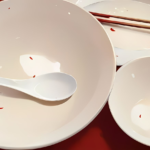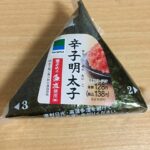- HOME >
- MR.X
MR.X
I work in trade-related jobs in the suburbs of Tokyo. I share the good points and wonders of Japan, as well as its interesting culture.

Have you ever heard of Kendama? This traditional Japanese toy has been captivating people for centuries and has recently gained international popularity. Let's dive into the world of Kendama and discover its charm! What is Kendama? Kendama is a traditional Japanese skill toy that consists of a wooden handle (ken) and a ball (tama) connected by a string. The ken has three cups and a spike, and the objective is to catch the ball on one of the cups or the spike. History of Kendama The origins of Kendama can be traced back to the 17th century. It is believed ...

One thing many foreigners notice when traveling in Japan is the essential dining mannerism of eating everything they order. Why is this so important? Let's delve into the reasons and the background. Expression of Gratitude to Food In Japan, there's a belief in expressing gratitude towards the food itself, the people providing it, and the environment that nurtured the ingredients. Leaving food uneaten is often perceived as acting contrary to this sentiment. Scarcity of Resources Japan, being an island nation with limited resources, relies heavily on importing many ingredients. Consequently, food is considered precious, and wasting it is a mindset ...

Japanese business culture is shaped by its unique traditions and manners. Within this, the way one carries themselves and their demeanor in business settings is of paramount importance. In particular, let's discuss a point that foreign businesspeople should be aware of regarding how one positions their legs during meetings and discussions. The Act of Crossing Legs In many countries, crossing one's legs is seen as a gesture indicating a relaxed posture or confidence. However, in the Japanese business scene, there's a tendency to avoid doing so. Why Legs Shouldn't be Crossed Expression of Respect: In Japanese culture, in order to ...

SUDOKU was born in Japan and became a global sensation. Its popularity surged around 2005. Launching of the Puzzle Magazine "Nikoli"The prototype of SUDOKU, "Number place," was conceived in Switzerland in the 18th century and was popular in America. A Japanese man, Mr. Kaji, was fascinated by puzzles from the late 1970s. In 1980, he launched the puzzle magazine "Nikoli" and introduced "Number place", which was popular in America, to the Japanese audience with the name SUDOKU. Meaning of SUDOKUThe "SU" in SUDOKU represents the Japanese word for numbers. The "DOKU" in SUDOKU comes from the Japanese word DOKUSHIN, meaning ...

In Japan, where tradition and business are deeply intertwined, the exchange of business cards (meishi) is not just a ritual but is of utmost importance as a part of professional etiquette. For those unfamiliar with Japanese customs, here's a guide to mastering the art of business card exchange. Present from below: When handing over your business card, offer it from a position slightly below the card that the other person is presenting. This gesture signifies humility and respect, as if placing the recipient's status above your own. Ensure that the card is oriented such that the recipient can easily read ...

Introduction:One of the first things many foreign tourists notice when visiting Japan is that the standing position on escalators varies by region. Particularly, the difference between Osaka, a representative city of western Japan, and other cities is quite surprising. But why does this difference exist? 1. The Standard for Escalators Across Japan:In many parts of Japan, when riding an escalator, the standing position is on the left side, and the walking lane is on the right. This aligns with Japan's traffic rules and the flow of pedestrians, and this rule is observed in many cities. 2. The Exception of Osaka:However, ...

In Japan, there are many convenience stores like 7-Eleven. This time, I will explain how to eat onigiri, which is sold in convenience stores and supermarkets. Onigiri is a traditional Japanese handmade lunch or snack. It is primarily made by shaping white rice into a triangle, circle, or cylinder, and it can contain various fillings such as pickled plum, salmon, tuna mayonnaise, and spicy cod roe. The outside of the onigiri is typically wrapped in nori (dried seaweed sheet) to prevent the rice from sticking to the hands when carrying or eating. This time, I will be eating an onigiri ...

Hello, travelers to Japan! If you're venturing into the urban areas of Japan, chances are you'll be using the train system. Especially during the morning and evening rush hours, trains can get incredibly crowded. During these times, you might notice many Japanese people holding their backpacks in front of them. There are several reasons for this practice. The Rationale Behind Holding Backpacks in Front Maximizing Space: Japanese trains, especially during peak hours, can be packed. Wearing a backpack on your back can make it difficult to maintain personal space. By holding it in front, passengers can free up space behind ...